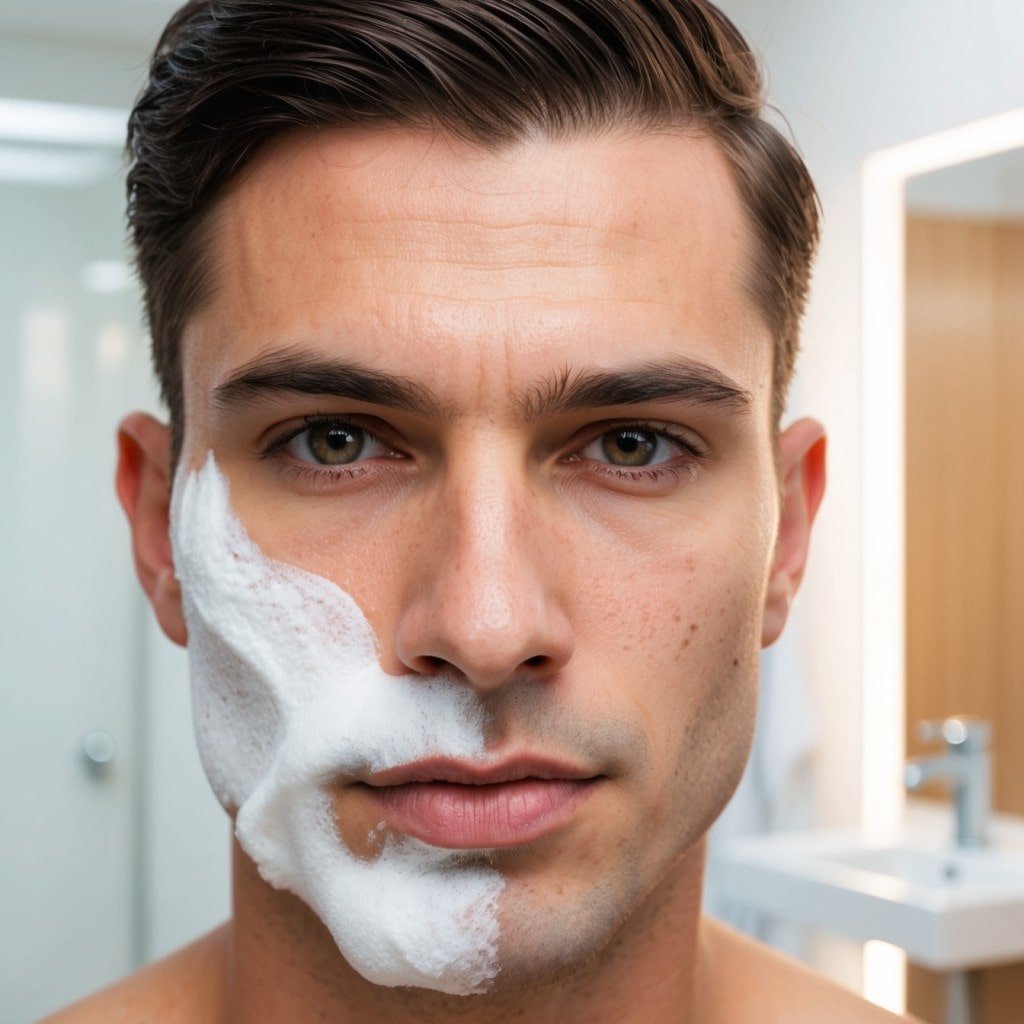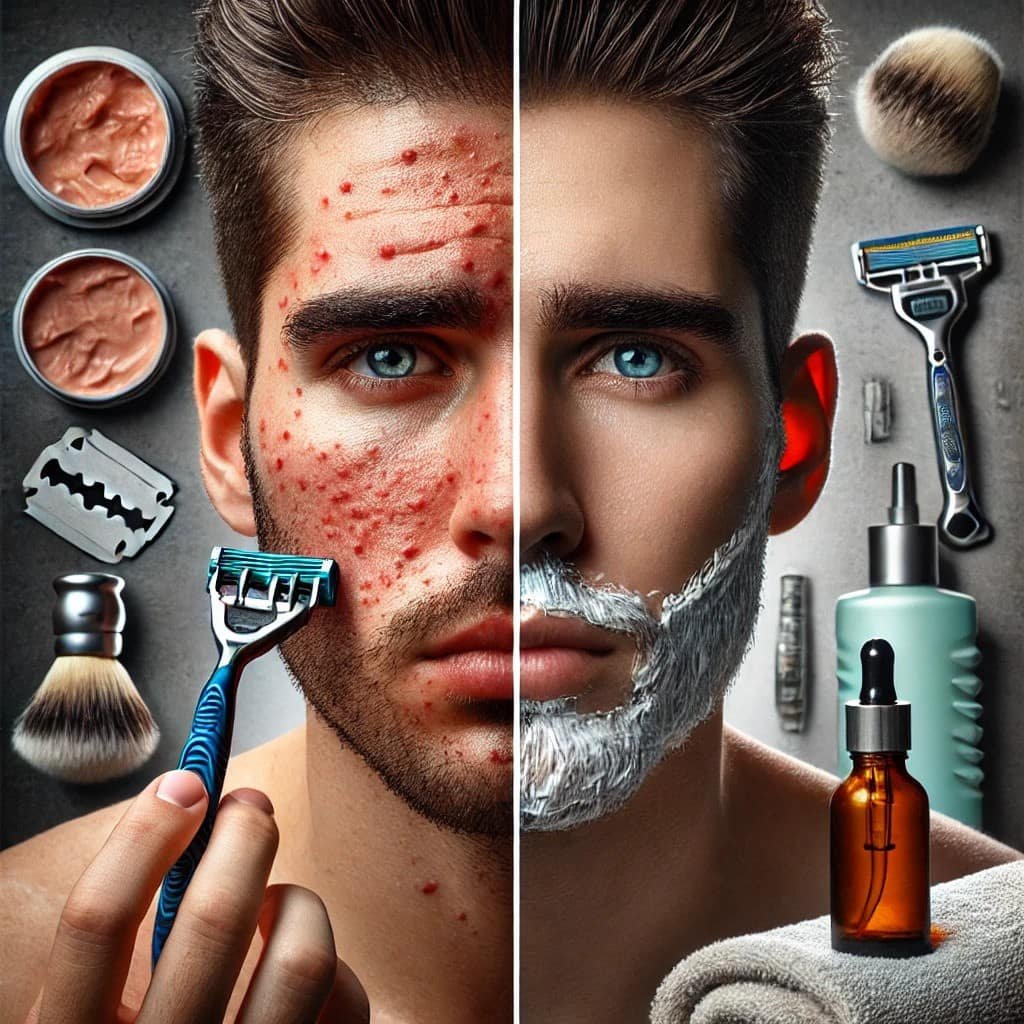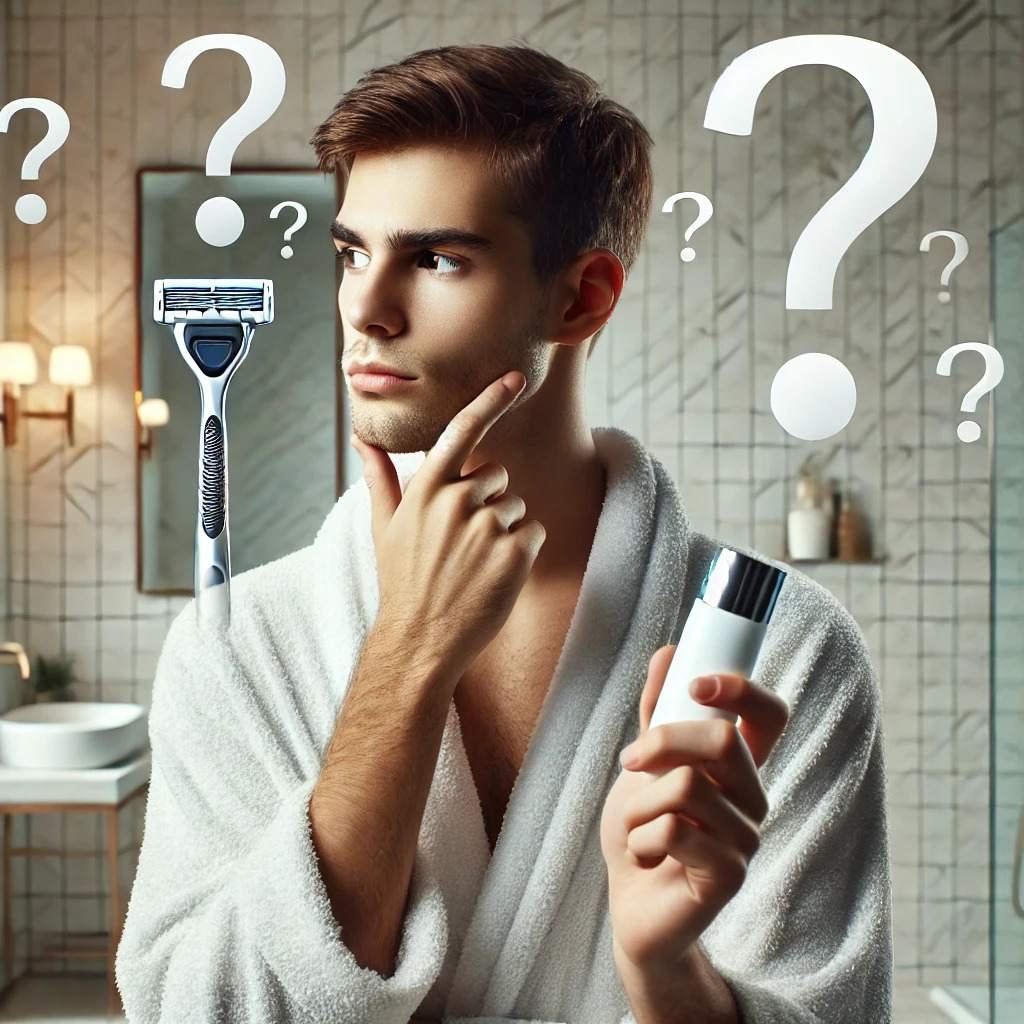Shaving is an essential part of grooming for many, but it can be harsh on your skin. This brings up an important question: can you do your skincare routine after shaving? The answer isn’t as simple as a yes or no—it depends on how you approach it. In this article, we’ll delve into why skincare after shaving is crucial, the best practices to follow, and what to avoid to keep your skin smooth and irritation-free.

Why Is Skincare Important After Shaving?
The Impact of Shaving on Your Skin
Shaving, whether it’s your face, legs, or any other part of your body, involves more than just removing hair. The blade also scrapes away the top layer of your skin, which can lead to micro-cuts, irritation, and a disruption of the skin barrier. This makes your skin more vulnerable to external aggressors such as bacteria, pollutants, and UV rays. Thus, it’s essential to follow a proper skincare routine after shaving to mitigate these effects.
Shaving exposes your skin to potential issues like razor burn, ingrown hairs, and dryness. Razor burn, a common problem, occurs when the blade irritates the skin, leading to redness, itching, and discomfort. Ingrown hairs, another frequent issue, happen when shaved hair curls back into the skin instead of growing outward, causing painful bumps. Dryness results from the skin losing its natural oils during the shaving process. Addressing these issues immediately after shaving can make a significant difference in the health and appearance of your skin.
Post-Shave Skincare: Key Benefits
Given the potential for irritation and damage, can you do your skincare routine after shaving? Yes, and it’s not only possible but highly recommended. Proper post-shave skincare helps to calm the skin, reduce inflammation, and restore moisture. This is particularly important because your skin is at its most vulnerable right after shaving.
By following a post-shave skincare routine, you can prevent common issues like razor burn and ingrown hairs. Additionally, nourishing your skin with the right products can enhance its resilience, helping it recover more quickly and reducing the likelihood of long-term damage. A well-executed skincare routine also leaves your skin feeling smooth, soft, and comfortable, which is exactly what you want after the sometimes harsh process of shaving.
Safely Caring for Your Skin Post-Shave
Now that we’ve established the importance of post-shave skincare, let’s go through the steps you should follow to ensure your skin gets the care it needs. Each step is designed to address the specific needs of freshly shaved skin, helping to protect and nourish it.
Step 1: Cleanse Your Skin Gently
The first step in your skincare routine after shaving is to cleanse your skin. This step is crucial because shaving can leave behind traces of shaving cream, oil, and dead skin cells. Use a mild cleanser that is free from harsh chemicals and fragrances to avoid further irritating your skin. A gentle cleanser will help remove impurities without stripping your skin of its natural oils.
When cleansing after shaving, use lukewarm water. Hot water can exacerbate irritation, while cold water might not effectively open up your pores for a thorough cleanse. Gently massage the cleanser into your skin in circular motions, focusing on areas that were shaved. Rinse off with lukewarm water and pat your skin dry with a soft towel—don’t rub, as this can irritate the skin further.
Step 2: Apply a Soothing Toner
After cleansing, it’s time to apply a soothing toner. Toners are an essential part of any skincare routine, but they are particularly beneficial after shaving. They help to close the pores, balance the skin’s pH levels, and prepare it for the next steps in your routine. Look for toners that contain soothing ingredients like witch hazel, aloe vera, or chamomile. These ingredients are known for their anti-inflammatory properties and can help reduce any redness or irritation caused by shaving.
To apply toner, pour a small amount onto a cotton pad and gently swipe it across your face, focusing on the areas you’ve shaved. If you prefer, you can also pour the toner into your hands and pat it onto your skin. This method is particularly gentle and effective at delivering the toner’s benefits directly to your skin.
Step 3: Moisturize to Lock in Hydration
Moisturizing is perhaps the most critical step in your skincare routine after shaving. Shaving can strip your skin of its natural oils, leaving it dry and vulnerable. A good moisturizer will replenish the moisture lost during shaving and help restore the skin’s natural barrier.
When choosing a moisturizer for post-shave care, opt for a product that is non-comedogenic (meaning it won’t clog your pores) and free from fragrances. Fragrances can be irritating to freshly shaved skin, so it’s best to avoid them. Look for moisturizers that contain hydrating ingredients like hyaluronic acid, glycerin, or ceramides. These ingredients help to lock in moisture and support the skin’s barrier function.
Apply the moisturizer while your skin is still slightly damp from the toner. This helps to seal in the moisture and maximize the benefits of the product. Gently massage the moisturizer into your skin using upward, circular motions. Take your time with this step—massaging your skin can improve circulation and enhance the absorption of the moisturizer.
Step 4: Aftershave Balm Benefits
Incorporating an aftershave balm into your skincare routine after shaving can provide additional soothing benefits. Aftershave balms are designed to cool and calm the skin, reducing any post-shave irritation or burning sensation. They often contain ingredients like aloe vera, chamomile, and vitamin E, which are excellent for soothing the skin.
While not everyone may use aftershave, it can be particularly beneficial if you have sensitive skin or if you experience razor burn frequently. To apply, dispense a small amount of balm into your hands and gently pat it onto your face, focusing on areas that feel irritated. Allow the balm to absorb fully before moving on to the next step in your routine.
Step 5: Importance of Sun Protection
Sun protection is an often overlooked but vital part of your skincare routine after shaving. Shaving removes the top layer of your skin, making it more susceptible to damage from UV rays. Applying sunscreen is essential to protect your skin from sunburn, premature aging, and the risk of skin cancer.
Choose a broad-spectrum sunscreen with an SPF of 30 or higher. Broad-spectrum protection means that the sunscreen protects against both UVA and UVB rays, which can cause long-term skin damage. If you have oily or acne-prone skin, look for a sunscreen that is lightweight and non-comedogenic.
Apply the sunscreen generously to all exposed areas of your skin. Don’t forget areas like your neck and the back of your hands, which are often neglected but still vulnerable to sun damage. Reapply sunscreen every two hours if you’re spending time outdoors, especially if you’re sweating or swimming.
What to Avoid After Shaving
While there are many beneficial steps you can take in your skincare routine after shaving, there are also some common pitfalls to avoid. These mistakes can exacerbate irritation and lead to further skin problems.
Avoid Harsh Exfoliants
Exfoliation is an important part of any skincare routine, but it’s best to avoid it immediately after shaving. Exfoliating right after shaving can cause micro-tears in the skin, leading to increased irritation and the risk of infection. Instead, wait at least 24 hours before using any exfoliating products. When you do exfoliate, choose a gentle product with fine granules or a chemical exfoliant like salicylic acid or glycolic acid.
Skip Products with Alcohol
Many toners and aftershaves contain alcohol, which can dry out your skin and cause irritation, especially after shaving. Alcohol-based products can strip your skin of its natural oils, leaving it feeling tight and uncomfortable. Instead, opt for alcohol-free alternatives that are formulated to be gentle on the skin.
Steer Clear of Heavy Oils
While oils can be nourishing, heavy oils can clog pores and lead to breakouts, especially on freshly shaved skin. If you prefer to use oils in your skincare routine after shaving, opt for lightweight, non-comedogenic oils like argan oil or squalane. These oils provide hydration without overwhelming your skin.

Common Mistakes After Shaving
It’s easy to make mistakes in your skincare routine after shaving, especially if you’re in a hurry or unsure of the best practices. Here are some common mistakes to watch out for.
Using Hot Water
It might be tempting to use hot water after shaving, especially if you’re shaving in the shower, but this can actually aggravate your skin. Hot water can strip your skin of its natural oils, leading to dryness and irritation. Instead, use lukewarm water during your skincare routine after shaving. Lukewarm water is gentle on the skin and helps to open up the pores without causing irritation.
Skipping Moisturizer
One of the biggest mistakes people make in their skincare routine after shaving is skipping moisturizer. Without moisturizing, your skin is more likely to become dry, irritated, and prone to breakouts. Always finish your routine with a good moisturizer to lock in hydration. If you have oily skin, don’t skip this step—choose a lightweight, oil-free moisturizer that won’t clog your pores.
Applying Products Too Soon
Patience is key when it comes to your skincare routine after shaving. Applying products too soon after shaving can cause stinging and irritation. Give your skin a few minutes to cool down before applying any products. This allows your pores to close and reduces the risk of irritation. By allowing your skin to rest briefly after shaving, you give it time to recover from the physical stress of the razor and reduce the likelihood of adverse reactions when applying skincare products. Allowing your skin to breathe for a few minutes can also help reduce the risk of clogged pores, which can lead to breakouts.

FAQ: Skincare Routine After Shaving
Can I Use My Regular Skincare Products After Shaving?
Yes, you can use your regular skincare products after shaving, but it’s essential to ensure that they are suitable for sensitive skin. After shaving, your skin is more vulnerable, so products with gentle, soothing ingredients are ideal. Avoid products with harsh chemicals or fragrances, as they can cause irritation or exacerbate any existing sensitivity.
How Long Should I Wait Before Starting My Skincare Routine After Shaving?
It’s recommended to wait about 5-10 minutes before beginning your skincare routine after shaving. This brief pause allows your skin to cool down and your pores to close slightly, reducing the risk of irritation. During this time, you can gently rinse your face with lukewarm water or apply a cool compress to calm the skin.
Is It Better to Shave Before or After My Skincare Routine?
It’s generally better to shave before your skincare routine, as this allows you to properly cleanse and treat your skin after the shave. Shaving first ensures that any oils, dirt, or dead skin cells are removed, making your skincare products more effective. However, if you have extremely sensitive skin, you might find it helpful to do a minimal skincare routine before shaving to prepare your skin, such as cleansing and applying a lightweight moisturizer.
What Should I Do If I Get Razor Burn?
If you experience razor burn, the best course of action is to treat your skin with calming and soothing products immediately. Apply a cool compress to the affected area to reduce inflammation. Follow up with an alcohol-free toner and a gentle moisturizer that contains soothing ingredients like aloe vera or chamomile. Avoid shaving the irritated area until it has fully healed.
Can I Exfoliate Before Shaving?
Exfoliating before shaving can be beneficial as it removes dead skin cells and helps prevent ingrown hairs. However, be sure to use a gentle exfoliant and avoid over-exfoliating, as this can irritate the skin and make it more sensitive to shaving. Exfoliate no more than once or twice a week, and follow up with a moisturizing and soothing skincare routine.
Conclusion
In conclusion, can you do your skincare routine after shaving? Yes, you absolutely can and should, as it’s crucial for maintaining healthy, smooth skin. Shaving can be harsh on your skin, making it more vulnerable to irritation, dryness, and other issues. By following the steps outlined in this article, you can ensure that your skin is well-cared for and protected after every shave.
Remember to start with a gentle cleanse, apply a soothing toner, and lock in moisture with a good-quality moisturizer. Consider using an aftershave balm for added soothing benefits and always finish your routine with sun protection if you’re heading outdoors. Avoid common mistakes such as using hot water, skipping moisturizer, or applying products too soon, as these can exacerbate irritation and lead to long-term skin issues.
Your skin deserves the best care, especially after shaving. By implementing these tips and avoiding the common pitfalls, you’ll keep your skin looking and feeling its best. Whether you’re shaving daily or just occasionally, integrating a thoughtful skincare routine will help you achieve smooth, healthy skin with minimal irritation.

